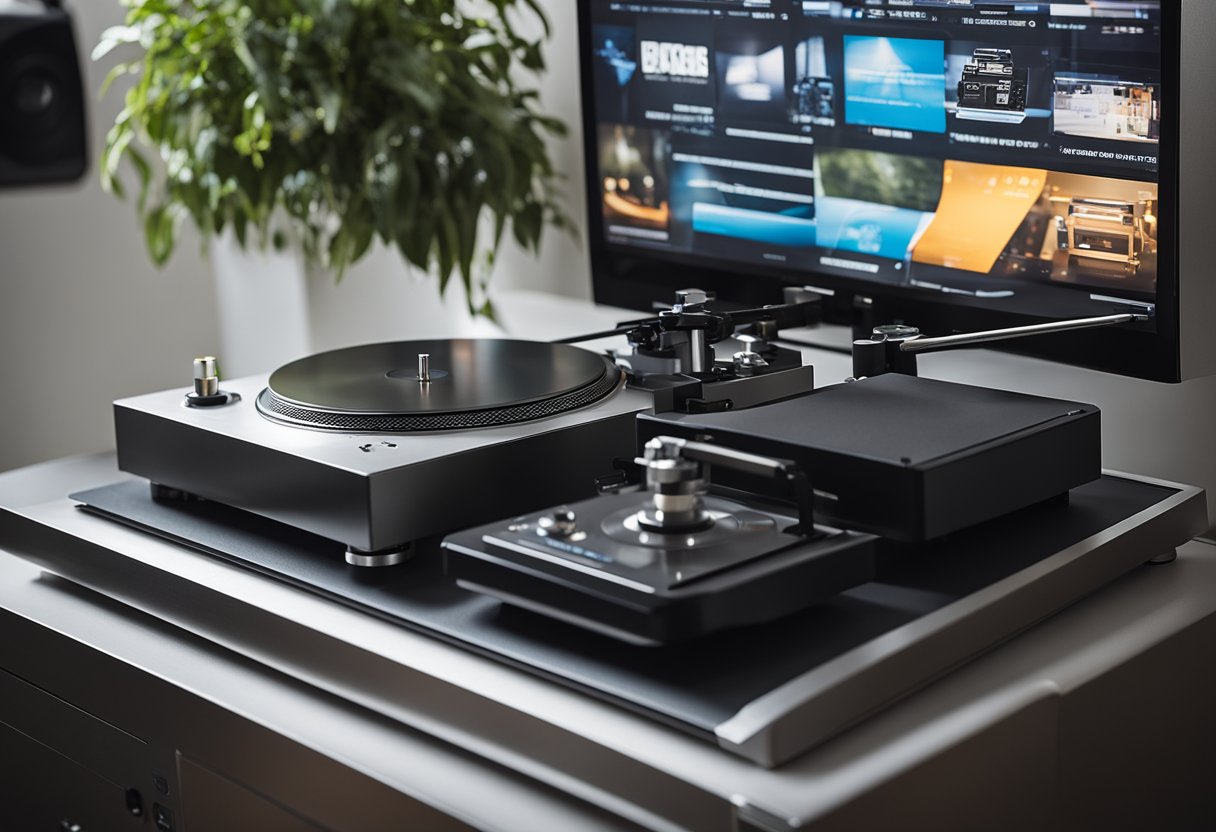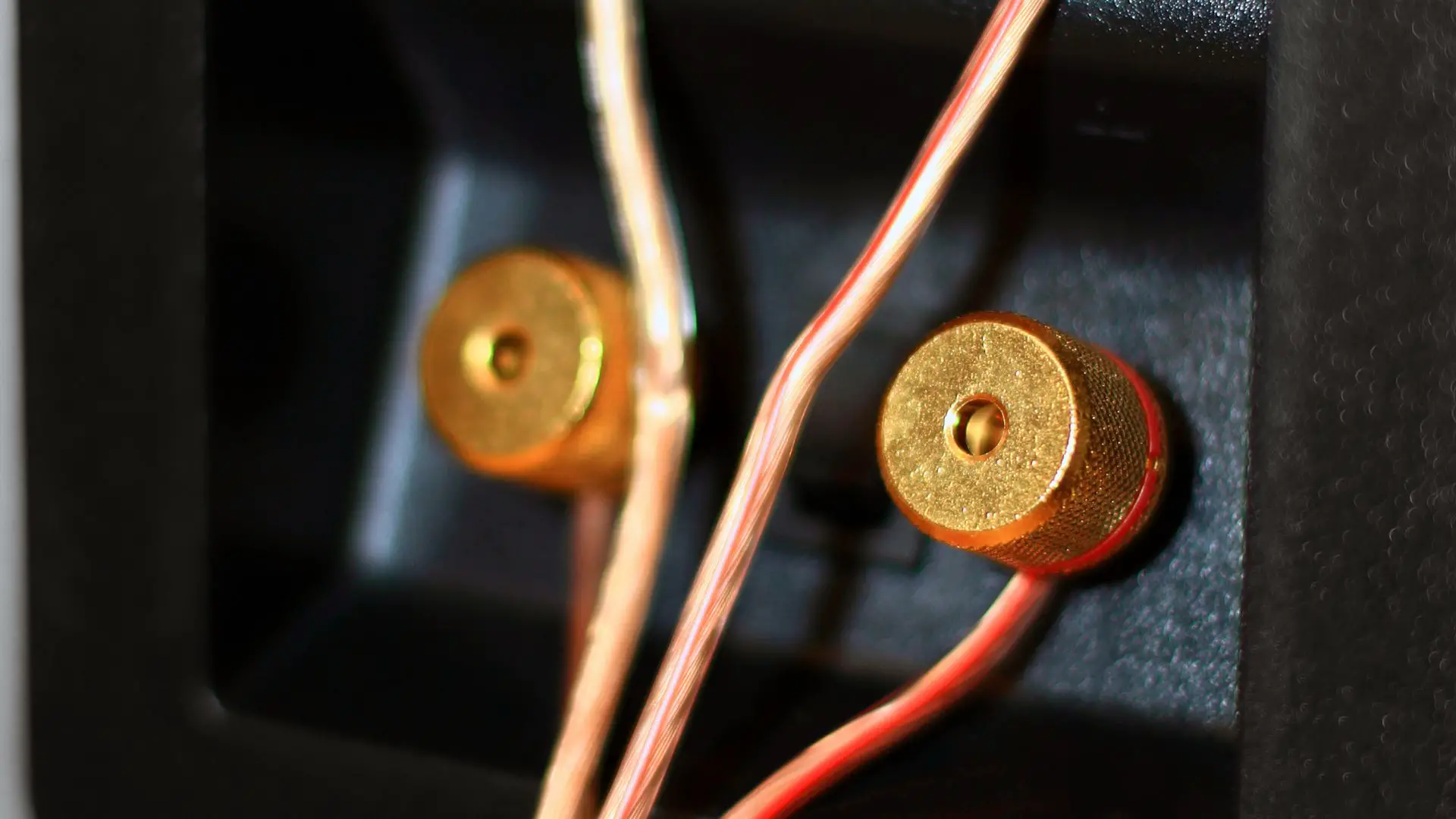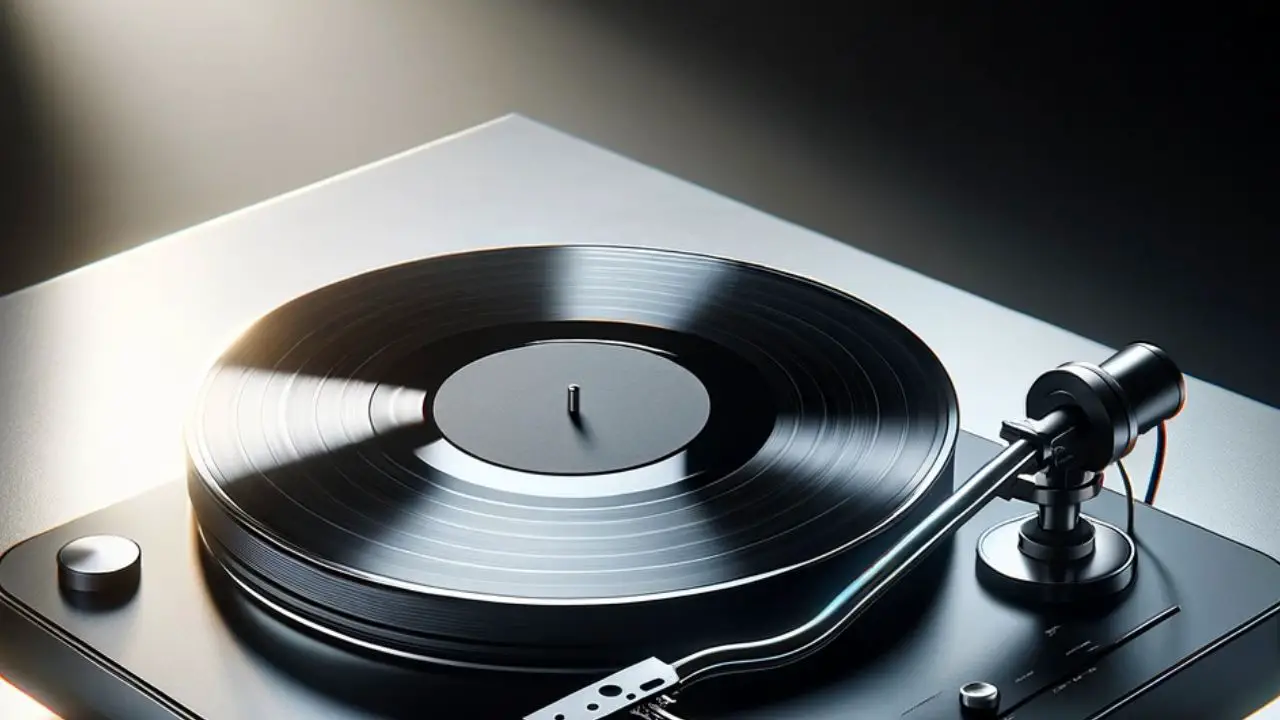When it comes to buying a turntable, there are a few key factors to consider. First and foremost, you’ll want to think about your budget. Turntables can range from a few hundred dollars to several thousand, so it’s important to have a clear idea of how much you’re willing to spend. You’ll also want to consider the type of turntable you want, as well as the features and components that are most important to you.
Some turntables come with built-in speakers, while others require external speakers to be connected. Additionally, you’ll want to think about the cartridge, tonearm, and platter, as these components can greatly affect the sound quality of your turntable.
Types of Turntables
When it comes to turntables, there are three main types: Belt Drive, Direct Drive, and Idler Wheel. Each has its own advantages and disadvantages, so it’s important to understand the differences between them before making a purchase decision.
Belt Drive
Belt Drive turntables use an elastic belt to connect the motor to the turntable platter. This design helps reduce motor vibrations from affecting the platter, leading to better sound quality. Belt drive turntables are generally quieter and have less wow and flutter than direct drive turntables. They are also less expensive and easier to maintain.
Direct Drive
Direct Drive turntables have the motor directly connected to the platter. This design allows for faster start-up times and more consistent speed. Direct drive turntables are also better suited for DJing and scratching due to their high torque motors. However, direct drive turntables tend to be more expensive and have more motor noise than belt drive turntables.
Idler Wheel
Idler Wheel turntables use a rubber wheel to transmit power from the motor to the platter. This design is less common than the other two types and is typically found in vintage turntables. Idler wheel turntables are known for their high torque and speed stability, making them popular among audiophiles. However, they can be difficult to find and maintain, and may require more frequent belt replacements.
Each type of turntable has its own strengths and weaknesses. Consider your needs and preferences before making a purchase decision. If you’re a casual listener looking for an affordable option, a belt drive turntable may be the way to go. If you’re a DJ or plan on using your turntable for scratching, a direct drive turntable may be the better choice. And if you’re an audiophile looking for the highest level of performance, an idler wheel turntable may be worth the investment.

Key Turntable Components
When buying a turntable, it’s important to understand the key components that make up the device. Here, we’ll discuss the three main components that you should be aware of: the platter, tonearm, and cartridge.
Platter
The platter is the circular surface on which the vinyl record sits. It’s important that the platter is heavy and stable, as this reduces vibrations and ensures that the record plays smoothly. Heavy platters also help to reduce wow and flutter, which are distortions that can occur when the platter spins unevenly.
Tonearm
The tonearm is the long, thin arm that holds the cartridge and stylus. It’s important that the tonearm is balanced, as this ensures that the stylus tracks the record correctly and minimizes wear and tear. Some turntables have adjustable tonearms, which allow you to fine-tune the tracking force and anti-skate settings.
Cartridge
The cartridge is the small device that holds the stylus and converts the mechanical energy of the stylus moving through the record’s grooves into an electrical signal. There are two main types of cartridges: moving magnet (MM) and moving coil (MC). MM cartridges are generally less expensive and easier to replace, while MC cartridges tend to offer better sound quality but are more expensive and require more maintenance.
The platter, tonearm, and cartridge are the key components that make up a turntable. When buying a turntable, it’s important to consider the quality and features of each of these components to ensure that you get the best possible sound and performance.
Features to Consider

When buying a turntable, there are several features to consider that can affect the quality of your audio experience. Here are some of the most important features to keep in mind:
Manual vs Automatic
Manual turntables require you to manually lift and place the tonearm onto the record and manually lift it off when the record is finished. Automatic turntables, on the other hand, have a mechanism that automatically lifts and places the tonearm, and returns it to its resting position when the record is finished.
While automatic turntables are more convenient, they can also introduce unwanted noise and vibration into the audio signal. Manual turntables are generally considered to be more reliable and provide better sound quality.
USB Output
Many modern turntables come equipped with a USB output, allowing you to connect the turntable directly to your computer and digitize your vinyl collection. This can be a convenient way to listen to your records on the go, and can also help preserve your vinyl collection for future generations.
However, it’s important to keep in mind that the quality of the digitized audio will depend on the quality of the turntable’s components. If you’re primarily interested in digitizing your vinyl collection, it may be worth investing in a higher-end turntable with better components.
Built-In Preamp
Some turntables come equipped with a built-in preamp, which amplifies the audio signal from the turntable and prepares it for output to an external amplifier or speakers. If your external sound system doesn’t have a phono input, a turntable with a built-in preamp can be a convenient solution.
However, built-in preamps can also introduce unwanted noise and distortion into the audio signal, so it’s important to choose a turntable with a high-quality preamp if you’re looking for the best possible sound quality.
When choosing a turntable, it’s important to consider factors such as manual vs automatic operation, USB output, and built-in preamps.
New vs Used Turntables

When it comes to buying a turntable, one of the first decisions you’ll have to make is whether to buy new or used. There are pros and cons to each option, and ultimately the decision will come down to your personal preferences and budget.
New Turntables
One advantage of buying a new turntable is that you’ll have access to the latest technology and features. Newer models often have improved sound quality, better motor systems, and more advanced tonearms. Plus, new turntables come with warranties, so you’ll have peace of mind knowing that you’re covered if anything goes wrong.
Another advantage of buying new is that you’ll have a wider selection to choose from. There are many reputable brands that manufacture turntables, each with their own unique features and designs.
Used Turntables
Buying a used turntable can be a great way to save money, especially if you’re on a tight budget. You can often find high-quality vintage turntables that are still in excellent condition for a fraction of the cost of a new model.
Another advantage of buying used is that vintage turntables often have a warm, rich sound that many audiophiles prefer over newer models. Plus, vintage turntables can be a great way to add a unique, retro touch to your home audio setup.
However, there are some drawbacks to buying used. For one, you won’t have access to the latest technology and features. Additionally, used turntables may require more maintenance and repairs, which can add to the overall cost.
Top Turntable Brands
When it comes to buying a turntable, choosing a reliable brand is essential. Here are some of the top brands that you should consider:
Technics
Technics is a well-known brand in the turntable industry. They offer a range of turntables that cater to different needs and budgets. Their turntables are known for their high-quality sound and durability. The brand has been around for over 50 years, and their experience in the industry is reflected in the quality of their products.
Audio-Technica
Audio-Technica is another brand that has been in the turntable industry for a long time. They offer a range of turntables that cater to different needs and budgets. Their turntables are known for their high-quality sound and ease of use. The brand is also known for its innovation, and they are constantly coming up with new technologies to enhance the turntable experience.
Pro-Ject
Pro-Ject is a brand that is known for its high-end turntables. They offer turntables that cater to audiophiles who are looking for the best possible sound quality. Their turntables are known for their attention to detail and craftsmanship. The brand is also known for its minimalist design, which is perfect for those who want a turntable that looks as good as it sounds.
These three brands offer a range of turntables that cater to different needs and budgets, so you’re sure to find one that suits you.
Maintaining Your Turntable
Taking care of your turntable is crucial to ensure that it lasts for a long time and performs at its best. Here are some tips to help you maintain your turntable:
1. Keep It Clean
Dust and debris can accumulate on your turntable, affecting its performance and sound quality. To clean the external surfaces, use a microfiber cloth to wipe down the turntable two to three times a month. For the stylus, use a stylus brush to gently remove any dust or debris. Avoid using any harsh chemicals or cleaning solutions as they can damage your turntable.
2. Check the Cartridge and Stylus
The cartridge and stylus are critical components of your turntable. They need to be checked regularly to ensure that they are working correctly. If you notice any issues with your cartridge or stylus, such as distortion or skipping, it may be time to replace them. Refer to the manufacturer’s instructions for guidance on how to replace them.
3. Keep the Belt Tight
If your turntable has a belt drive, it is essential to keep the belt tight. A loose belt can cause speed variations, affecting the pitch and sound quality. Refer to the manufacturer’s instructions for guidance on how to tighten the belt properly.
4. Store It Properly
When not in use, it is crucial to store your turntable properly. Keep it covered with a dust cover or a cloth to protect it from dust and debris. Avoid exposing it to direct sunlight or extreme temperatures, which can damage the components.
Conclusion
Remember, when buying a turntable, it’s important to consider your budget, your needs, and your personal preferences. Don’t be afraid to take your time and do your research before making a purchase.
Here are some key takeaways from this guide:
- A turntable can be a great investment for anyone who loves music and wants to experience it in a different way.
- When buying a turntable, it’s important to consider the quality of the components, such as the cartridge, tonearm, and platter.
- Make sure to set up your turntable properly, including leveling, balancing, and aligning the cartridge.
- Take care of your turntable by keeping it clean, protecting it from dust and scratches, and replacing worn-out parts as needed.




